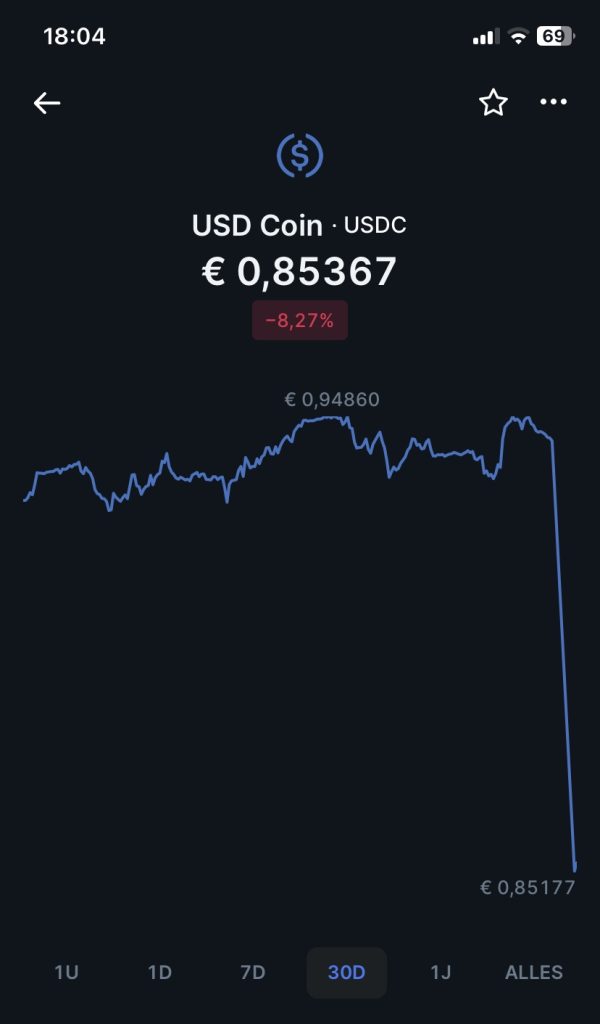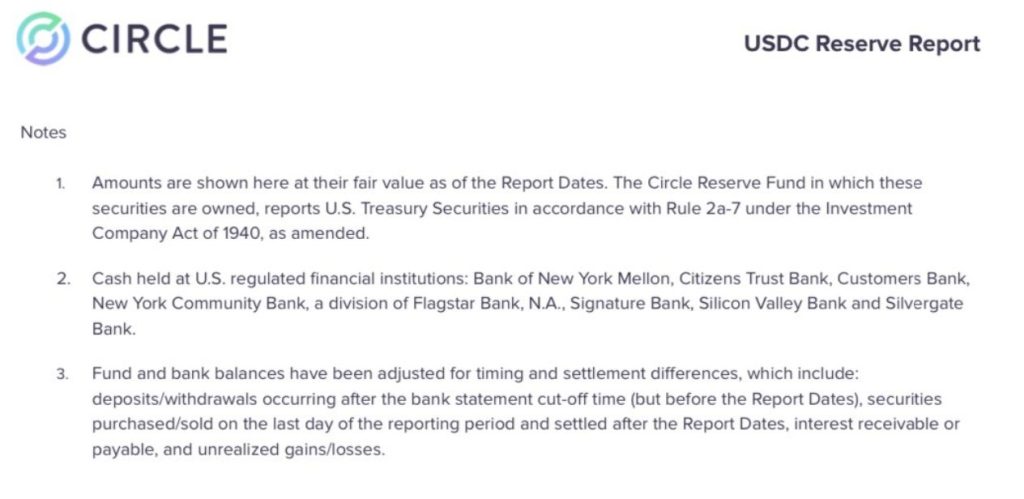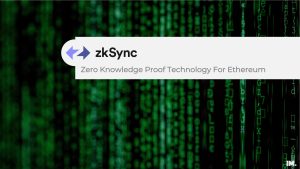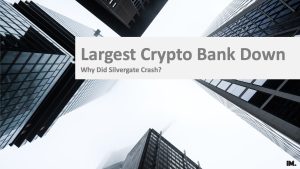… That We Realize How Has Been Swimming Naked
If your father calls me to ask if I have been impacted by the fall of Silicon Valley Bank, you know that something has gone wrong big time. The other time he called me was back in November 2022, when FTX turned out to be something close to a Ponzi.
Silicon Valley Bank’s failure is the second largest bank failure ever with a total of $209 billion in assets, making it the 16th largest bank in the United States. It also recorded the largest bank run since the Great Financial Crisis in 2008. It caused massive liquidity issues in both venture capital and crypto alike. And according to Y Combinator’s Garry Tan: it is a potential extinction-level event for the Silicon Valley’s startup community.
Let’s dive into it.
PS: if the title does not sound familiar to you, read this article first.
The Silicon Valley Bank: A Startup Best Friend
Silicon Valley Bank was a relatively young bank, only 40-years old (which in the banking world is like being in puberty). It made a name for itself banking almost 50% of the US venture capital-baked startup for a total of 65.000 companies as their clients. This excludes the venture capital funds, founders, advisors, and startup team members also banking with them 😳 In other words, Silicon Valley Bank became a startup best friend, being a good companion from the very first Seed A all the way to exit and beyond.
How They Build Up Their Client Base
The way they attracted most of the startup in the Silicon Valley was by offering very friendly loans to both venture capital funds and startups in return for these startups (and team) using them as an exclusive bank.
Quid pro quo. Nothing wrong with that, of course.
Their startup friendly loan would sell like hot cakes. This allowed Silicon Valley Bank to establish long-lasting relationships not only with the startups, but with the venture capital funds behind them, founders, and teams alike. They were so successful, especially in the 2020-2021 venture capital frenzy, that the deposit inflow was much larger than they were able to lend or invest. In other words, they couldn’t originate loans nearly as quickly as deposits were coming in. A luxury problem to have, in principle.
Their asset under management went from $ 61 billion at the end of 2019 to $ 189 billion at the end of the 2021 frenzy. This was mostly driven by IPOs, SPAC fundraising, venture capital investments, acquisitions, and other fundraising activities.
How They Invested Startup Deposits
With deposits flowing in effortlessly, Silicon Valley Bank had a continuous need to offset that cash into profitable investment strategies. They decided to move quickly in the span of 2020-2021 in what they thought was going to be a relatively “safe” asset allocation while remaining liquid and protecting the nominal value on the short-mid term. In theory, a perfect asset class for this type of investment objective are long-term fixed income securities. So most of their deposits were allocated into long-term treasury bonds and mortgage-backed securities.
📞 Help Line – Mortgage-Backed Securities 🏡
Like the name suggests, these are debt obligations paying a fixed interest rate financed by the income of mortgage contracts. When a mortgage is issued by a bank, that contract is typically sold to an institutional investors (the likes of a pension fund, credit funds, or investment banks) who need to offset cash in exchange for fixed-income returns on the long-term.
When done well, this is a very attractive financial product for funds who have excess liquidity and need to generate returns on the long-term. When abused, you get 2008. Easy peasy.
Red Flag #1: All Time Low Interest Rates
Fixed-income securities bought in 2020-2021 were at all time interest rates. By the end of 2021, Silicon Valley Bank had over $ 120 billion in these securities, while the rest was invested in traditional bank loans (ca. $ 70 billion). This type of allocation is actually more common in fixed-income hedge funds, not banks. On top of that, this works well as long as interest rates remain low.
For those not familiar with the pricing of fixed-income securities, if the interest goes up (compared to what the security pays), the value of the security goes down, and vice versa. Imagine a fixed-income product (bond) of $ 1.000 paying 3,0% a year for 10 years. Now let’s assume that after one year, the central banks raises market interests by 0,5% to 3,5%. You bond would be worth $ 962. That is a drop of -3,8% for every 0,5% increase in interest.
Market Return | Interest Paid | Maturity Period | Face Value | Coupon Per Period | Bond Price |
|---|---|---|---|---|---|
3,0% | 3,0% | 10 | $ 1.000 | $ 30 | $ 1.000 |
3,5% | 3,0% | 9 | $ 1.000 | $ 30 | $ 962 (-3,8%) |
Red Flag #2: High (85%) Uninsured Deposits rate
Silicon Valley Bank was (on paper) FDIC insured. The FDIC is the Federal Deposit Insurance Corporation, providing deposit insurance on accounts under $250.000. However, the average venture-backed startup would have much more than this amount in deposits. As a result of that, 85% of the funds deposited with the bank were over the FDIC threshold and thus uninsured.
Turning Point: Interest Rates Increase
When the Feds started raising interest rates, together with the world’s central banks in an effort coordinated by Bank for International Settlements (also known as, the central bank of central banks), a few things started to change for Silicon Valley Bank.
Unrealized Losses
Like explained above, when interest rates rise, the value of fixed-income securities bought at low interest rates decreases. And fast.
Silicon Valley Bank had a total of $ 120 billion bond portfolio on the mid-curve. That means that most of their securities would mature in 5 years. According to my calculations, for every 0,10% rise in interest rates, their portfolio would book a total unrealized loss of $ 576 million.
Note: it is technically called unrealized loss, because you lose money only if you are forced to sell. But in the meantime, from accounting perspective, those products “lost value”.
Anyways, with interest rate raising a 2,00% (on average), Silicon Valley Bank booked a total of $ 14 billion unrealized losses, equal to their entire equity capital.
One important thing to mention here is that all those fixed-income securities were not hedged! In other words, Silicon Valley Bank had not insured any of their fixed-income products
PS: and in all this, none of the rating agencies and regulators found this suspicious!
Why Was Their Portfolio Not Insured
For those of you not familiar with fixed-income securities, here’s what you need to know about this.
Imagine you have build up a position in hedged fixed-income securities at low interest rates. When interest rate rise, your bonds will lose value, but your hedge will increase in value. In a rising interest rate market, hedging positions bought at low-interest rates appreciate in value.
The opposite is true in decreasing interest rate markets. When interest rate are lowered compared to your fixed-interest products, your bonds will increase in value, your hedge will decrease instead.
However, here is an important difference. A increase or decrease in your securities price will be booked in your balance sheet. On the other hand, an increase or decrease in your hedging component will end up in your profit and loss statement!
So what those banks were doing by not hedging their portfolio was to protect their profit and loss statement… on the short-term. Why? Well, guess how bonuses are calculated at the end of the year 😮💨
Fewer Funds Flowing To Startups
Generally, when interest rates increase, investors tend to be satisfied with less returns if that means less risk. While in markets a low interest rates, investors tend to take more risk in the hope of realizing higher returns.
This means that the risk/return ration in startup investing was less attractive to investors than traditional financial products such as treasury bonds. Throughout 2022, lending money to the government would pay between 2-4% a year, depending on the maturity. This is what is typically called “risk-free”.
This resulted in a decrease in deposits in Silicon Valley Banks due to fewer capital available for the startup space.
Last Hope: Share Sale Led By JP Morgan
Like I mentioned before, the $ 14 billion lost in value were “unrealized losses”. They were going to lose that money only if they were forced to sell those fixed-income securities. This is a very risky position to be in. Silicon Valley Bank was literally one withdrawal away to collapse for liquidity issues.To avoid that, they decided to raise more equity capital through issuance of new shares. The process would be led by JP Morgan.
Fortunately the liquidity issues were noticed by regulators and rating agencies, upon auditing quarterly financial statements. However, because of the fallback plan with the issuance of new shares with JP Morgan, they quickly deemed the whole case as business as usual. And the whole thing went unnoticed.
Market Says No 📉
However, upon market knowing that due to liquidity issues they were going to issue new shares, panic already started. Once news got out, Silicon Valley Bank stock dropped 60% in one day to $ 160.
It got even worse when venture capital funds started withdrawing funds and advising all their portfolio companies to do the same. And with that the bank run began and therefore the inevitable fall. After all, when s*it hits the fan, you do not want to be the last in line to get your funds back.
A Very Important Player In Trouble: Circle 🪙
Amongst the many funds, companies, and private individuals hit by the bank run, one company stood out: Circle. Issuer of the USD stable coin USDC. Circle stored part of their hard cash reserves in their accounts with Silicon Valley Bank.
Circle had a total of $ 40 billion in reserves, backing their total USDC circulation. Circle held $ 3,3 billion at Silicon Valley Bank, representing 8,25% of the total reserve. As soon as investors realized that the fall of Silicon Valley Bank was going to have effect on USDC, funds were moved at once away from USDC towards Tether’s USDT. This fear caused USDC peg to USD to drop to 0,81 cents on the dollar. A drop of 20% as more and more people rushed away from USDC.
When I caught it on Sunday March 12, as you can see from this screen shot below, I knew Silicon Valley Bank was done 👇🏼

With USDC trading under its peg value, this could have disastrous consequences for other companies, should traders have been able to arbitrage that difference. When USDC dropped, Binance, Coinbase, and the largest exchanges in the world, closed most markets pairs with USDC to avoid liquidity exposure from traders and hedge funds arbitraging USDC.
The consequences would have been massive. If arbitrage were possible, each transaction would return anywhere between 15-20%. That would have crippled even the most liquid exchange on the world right now: Binance.
What’s Next
With Circle promptly reassuring investors of their reserves, USDC value snapped back to its peg value in a matter of days.

The biggest issue here is a possible worldwide bank run due to the insane amount of unrealized losses banks are incurring on their exposure in fixed-income positions because of raising interest rates. According to the Federal Deposit Insurance Corporation, the unrealized losses amount to $ 675 billion 😳

Currently, the Federal Deposit Insurance Corporation has $ 124 billion dollar in insured deposits on their books. The total amount of deposits in the banking system in $ 22 trillion. This means that only 1% of the deposits is actually insured. Despite assurances from the president in assurances from all types of institutions, the eventuality of a bank run at scale, caused by those unrealized losses, would cripple the US banking system.
My Final Thoughts
I am not per se worried about the fact that the financial system is by design not stable. In my engineering past, I learned that the most spectacular air- and spacecraft machines in the world are not stable by design but are stabilized.
The financial system is unstable. Period. But it can be made stable with a control system made up of organizations such as regulators, financial authorities, and rating agencies. Except, if those control system are quite literally sleeping at the wheel…
My thought here is really simple. In the long-run, this will reinforce the trust and need for a fully decentralized financial system. That will do two things, either:
- it stimulates the current financial system to step-up its game, or
- it stimulates further development in the decentralized world.
Either way, it is a win for the ecosystem. So let’s see who else turns out to have been swam naked 😉





No comment yet, add your voice below!